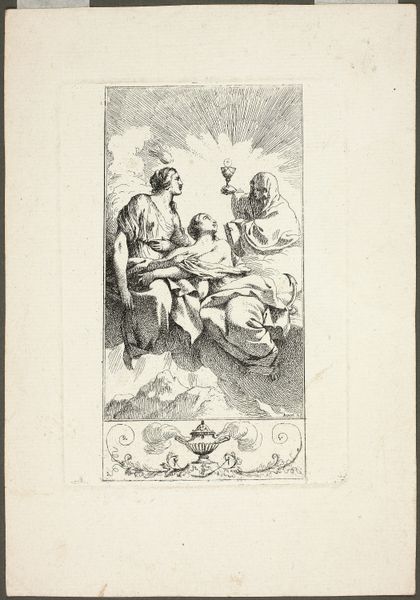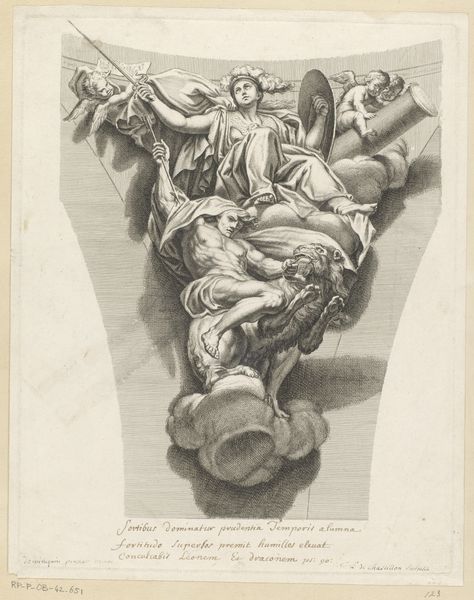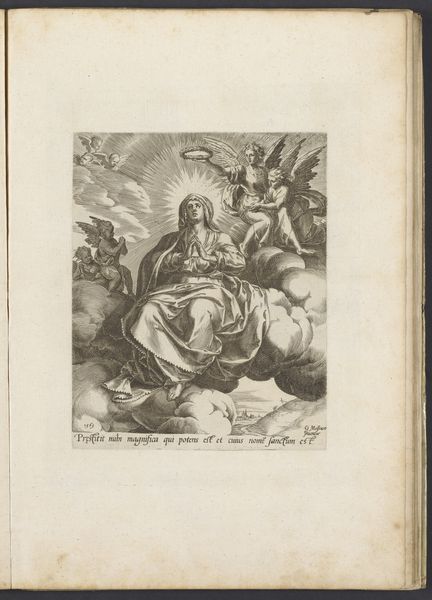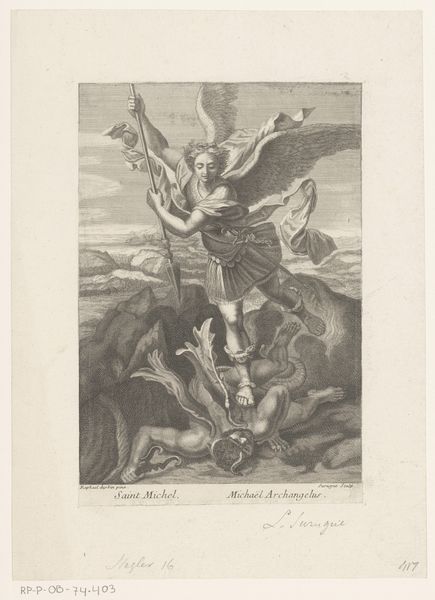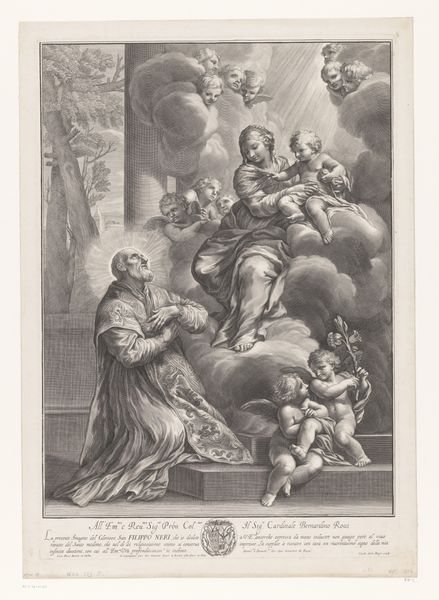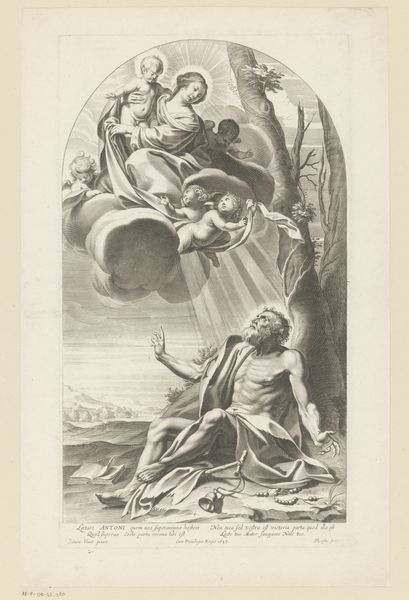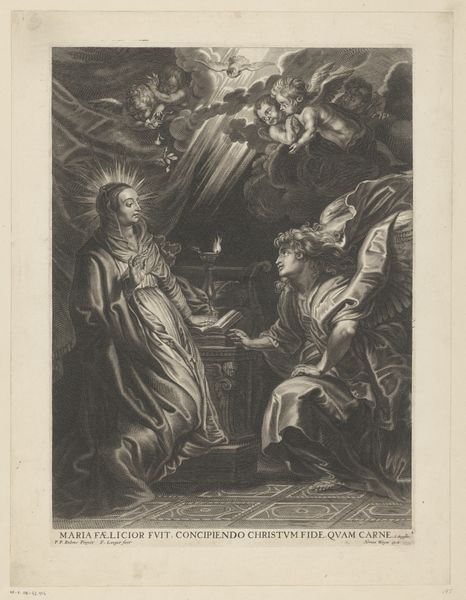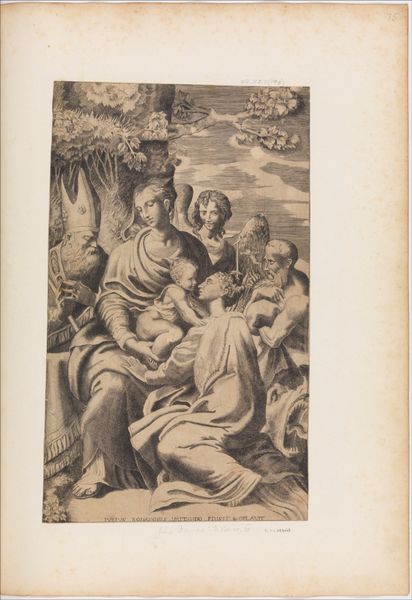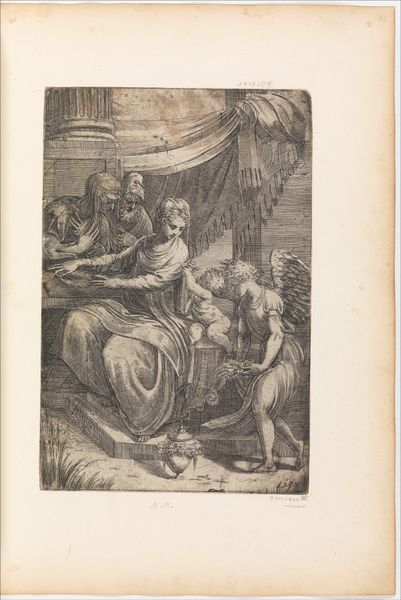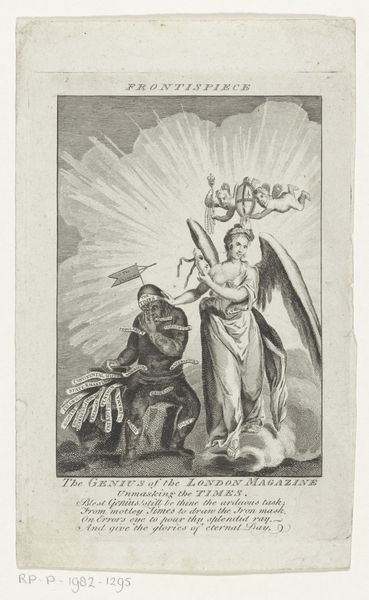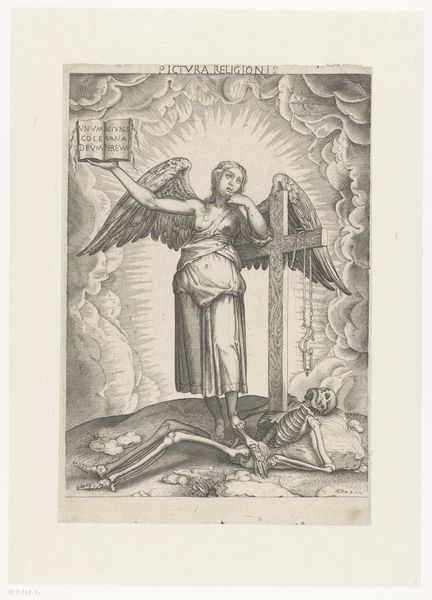
drawing, print, engraving
#
portrait
#
drawing
# print
#
mannerism
#
figuration
#
11_renaissance
#
history-painting
#
engraving
Copyright: Public Domain
Editor: Here we have "The Vision of St. Jerome" by Giulio Bonasone, dating from somewhere between 1510 and 1576. It's an engraving, currently residing at the Met. It’s interesting how the medium, being printmaking, would allow this image to be disseminated widely. What do you see in this piece in terms of its production? Curator: Well, right away, the fact that this is an engraving is critical. Bonasone isn't just expressing some personal vision; he's participating in a complex system of artistic reproduction and distribution. This wasn’t just about high art, it’s about a trade. Consider the labor involved: the initial design, the carving into the metal plate, the inking, the printing process itself, and the eventual distribution of these prints. Who was consuming this image, and what were their social circumstances? Editor: So, the affordability of a print changed how people interacted with art, right? It wasn't just for the elite anymore. Curator: Precisely! How did this increased access affect the status of painting, or other unique art objects? Think about the division of labor here too. Bonasone may be drawing on another artist's design - there are many versions, and his is most clearly inspired by Parmigianino’s earlier rendition of the subject, complicating our ideas of originality. The circulation of images, fueled by printmaking technology, transformed not only artistic style but also how knowledge was accessed and power was structured. We could analyze paper manufacturing and distribution, too, if we had more time! Editor: It’s really interesting to think of art as part of such a broad production system. Thanks for highlighting those social and economic implications! Curator: Absolutely. Focusing on the materials and process truly reshapes how we understand this work, doesn’t it? It stops being just about a saint and instead opens onto the much broader world.
Comments
No comments
Be the first to comment and join the conversation on the ultimate creative platform.
